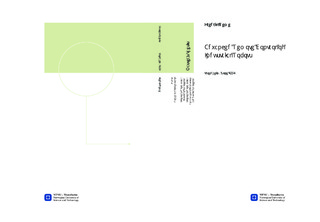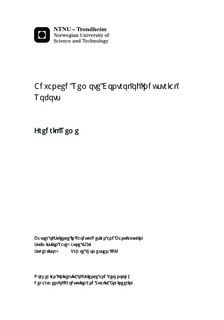| dc.description.abstract | The last few years, the use of industrial robots for tasks such as material handling, welding, painting and assembly, has expanded considerably - also in general industry. A company’s use of robots requires a certain expertise within the field of robotics. To hire in-house experts can be quite costly. Many small and medium sized enterprises (SMEs) consider robots in their productions, but cannot afford employing specialists. The challenge is therefore to find a way for robot system integrators to perform support and knowledge-transfer to the SMEs from the integrator’s location, making it cheaper and more efficient. To address this, one possibility is to enable remote operation of the industrial robots. This thesis aims to develop such a system, where new methods and technologies are used to achieve end-customer sup- port based on remote control. In developing a system like this, a major concern is how to efficiently communicate the state of the physical robot cell to the remote operator. The mul- tidisciplinary field CogInfoCom (Cognitive Infocommunications) deals with the connections between cognitive sciences and info communications, and was used for solving problems regarding transmission of the robot’s condition to the operator. The system developed in this thesis centers around the use of a gripper analog that the op- erator moves in space to remotely control the robot. Auditory and visual feedback for com- municating the state of the robot during control is used. The system includes functions for scaling, self-motion, motion guidance and teach-in programming, and was developed for a NACHI MR20 7-axis industrial robot. The combination of a MARG-sensor and a Microsoft Kinect was used to determine the gripper analog’s position and orientation in space. Practical experiments were performed for testing and verifying the scaling, the self-motion, the motion guidance and the teach-in programming. They demonstrated that all the func- tions lived up to their expectations. In addition, a test with a time-delay of one second was carried out. This resulted in indications that the control method aided the operator in time- delayed control, because it allowed him to plan motions ahead by relating them to his en- vironment. Moreover, a qualitative test with five participants was done to test the system’s general usability. All the participants performed a pick-and-place task, and everyone suc- cessfully completed this task. The observations during the usability test, suggested that the user interface was intuitive and easy to understand. However, the differences in camera-view perspective and control perspective could often cause confusions. With that said, it was clear that efficient usage of the system can be achieved with minimal training. During the usabil- ity test, it was also explored how the persons of interest responded to a visual overlay, cover- ing the operator’s computer monitor, turning red. In this case, the overlay gradually turned red to warn the operator that a singularity was approaching. Because most participants im- mediately halted the operation when this happened, the overlay concept was considered a beneficial way of conveying this information to the remote operator. In conclusion, the system’s utilization of a gripper analog as a tangible interface provides an intuitive way of remotely controlling industrial robots. Moreover, the use of CogInfoCom, such as the concepts of auditory and visual feedback, is a convenient way to communicate information of the robot’s state to the operator. | nb_NO |

